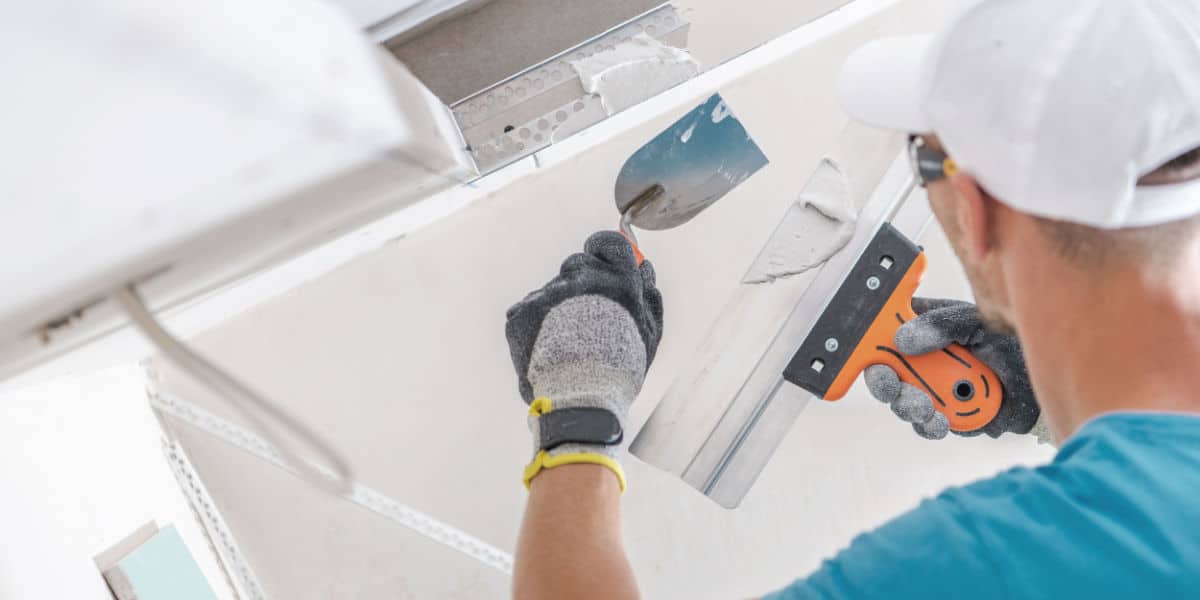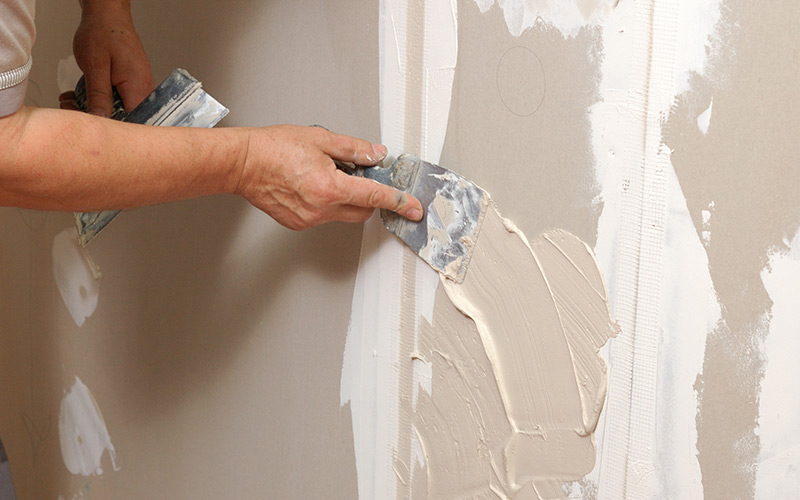Top-Rated Drywall Fort Worth Services for Residential Projects
Top-Rated Drywall Fort Worth Services for Residential Projects
Blog Article
Drywall Setup Facilitated: Tips for Perfect Results
Drywall setup is typically perceived as a challenging task, yet with the appropriate technique and knowledge, it can come to be a manageable undertaking. Choosing quality materials and preparing the setup area are essential initial actions that establish the structure for success. Understanding strategies for cutting, hanging, and completing drywall can significantly impact the end result. As we explore these vital suggestions, you may locate that even the tiniest modifications in your technique can result in remarkably boosted results, leaving you to take into consideration exactly how these methods can transform your next job.
Picking the Right Products
Picking the proper materials for drywall installation is important to accomplishing a durable and visually pleasing coating. drywall contractor. The primary part, drywall sheets, typically can be found in various densities, with 1/2-inch sheets being typical for interior wall surfaces. For locations needing additional wetness resistance, such as washrooms or cooking areas, consider using environment-friendly board or cement board, which are specifically made to withstand humidity

Furthermore, picking the best bolts-- either screws or nails-- is essential for securing the drywall to the framing. Drywall screws are usually favored for their holding power and reduced threat of standing out. Think about the finishing touches such as primer and paint, which not just enhance the look however likewise protect the drywall from moisture and wear.
Preparing the Installment Area
Prior to starting the drywall installation process, it is necessary to prepare the installation area completely. This prep work includes several essential actions to make certain a successful and smooth job. Initially, clear the area of any kind of furniture, devices, or blockages that can impede access. A clean work area lessens the threat of damages to existing items and enables for efficient motion throughout setup.
Following, examine the walls and ceiling for any type of blemishes, such as splits, openings, or mold and mildew. Address these problems beforehand; patch any type of damages and permit sufficient time for repairs to dry. Furthermore, make sure that electrical outlets, buttons, and plumbing are effectively positioned and represented, as this will certainly affect drywall placement.
Consider the environmental problems. A stable temperature level and humidity degree are important for optimum attachment and performance of the drywall materials. If essential, use a dehumidifier or heater to develop ideal conditions.
Trimming and Hanging Drywall
The key to effective drywall setup lies in the precise cutting and dangling of the panels. Begin by measuring the space accurately, considering any obstructions such as electrical outlets or home windows. Utilize a straight side and an energy knife to score the drywall along your measurements, after that snap it along the scored line for a tidy break. For even more intricate cuts, such as around electrical outlets, a drywall saw can be read what he said made use of for precision.

Constantly work from the top down and delegated right, making certain that you preserve a staggered pattern to boost security. Appropriately hanging the drywall sets the foundation for a smooth surface, inevitably leading to premium lead to your drywall project.
Insulation and Mudding Strategies
While proper cutting and dangling of drywall sets the phase, the following important step involves grasping taping and mudding methods to guarantee a seamless finish. Taping is crucial for enhancing joints and stopping fractures; it entails installing tape right into the applied joint compound (mud) Start with a high quality fiberglass or paper tape, applying the tape over the joint and pushing it right into the damp mud utilizing a taping knife, making sure no air bubbles stay.
When the tape is in location, use a slim layer of joint substance over the tape, feathering the edges to produce a smooth shift to the drywall surface. Permit this layer to dry completely prior to sanding it lightly to eliminate imperfections. Repeat this procedure, using additional layers of mud as essential-- typically 2 to three layers-- while progressively expanding the application area Find Out More with each layer to accomplish a smooth look.
After the last layer dries out, sand the surface area with a fine-grit sandpaper till smooth. drywall repair. Remember to put on a mask during sanding to avoid breathing in dirt fragments. Grasping these taping and mudding techniques is critical for attaining a professional-quality coating in your drywall installation
Finishing Touches for Excellence
Accomplishing a flawless drywall installment goes past taping and mudding; it culminates in the finishing touches that boost the overall look. These final steps are important in making sure a professional-grade coating that improves the aesthetic appeals of your area.
Begin by sanding the dried joint substance to develop a smooth surface area. Use a fine-grit sandpaper and a fining sand block or post sander for ideal control. Pay specific attention to edges and sides, as these locations have a tendency to require even more careful job. After sanding, clean down the wall surfaces with a damp fabric to get rid of any type of dirt bits, making sure a tidy surface area for paint.
Next, apply a guide specifically developed for drywall. This step is crucial, as it assists seal the joint compound and gives an uniform base for the topcoat. When the guide dries out, examine for any kind of imperfections, and touch up as needed.
Verdict
In verdict, effective drywall setup rests on the cautious option of materials, thorough preparation of the setup area, and accurate implementation of cutting and hanging methods. Mastery of taping and mudding processes is essential for accomplishing a smooth finish. In addition, focus to finishing touches, including priming and touch-ups, guarantees a professional-grade result. By adhering to these standards, the top quality of handiwork can be dramatically boosted, adding to the total visual and capability of the room.
Drywall installment is typically viewed as an overwhelming task, yet with the appropriate technique and expertise, it can come to be a workable undertaking.Choosing the proper products for drywall setup is essential to accomplishing a resilient and cosmetically pleasing finish.Prior to starting the drywall installment procedure, it click for more info is necessary to prepare the setup location completely. Grasping these taping and mudding techniques is vital for attaining a professional-quality finish in your drywall installation.
In final thought, effective drywall setup hinges on the mindful choice of products, thorough prep work of the setup location, and precise implementation of reducing and hanging techniques.
Report this page